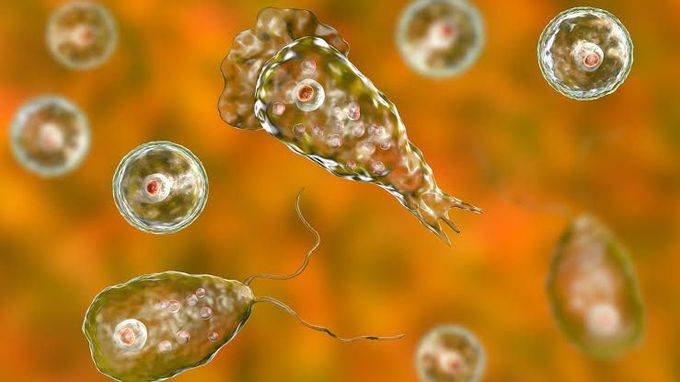


Symptoms of naegleria fowleri
OVERVIEW What is brain-eating amoeba (Naegleria fowleri)? Naegleria fowleri is an amoeba that lives throughout the world in warm and shallow bodies of fresh water, such as lakes, rivers and hot springs. It also lives in soil. It’s considered a free-living organism because it doesn’t need a host to live. People who become infected by this amoeba develop a condition called primary amoebic meningoencephalitis (PAM). PAM is a very serious infection of the central nervous system that’s almost always fatal. Note: You might also see the words “ameba” instead of “amoeba” and “amebic” instead of “amoebic.” Amoeba is more common than ameba, but both words refer to an organism with one cell. Cleveland Clinic is a non-profit academic medical center. Advertising on our site helps support our mission. We do not endorse non-Cleveland Clinic products or services. Policy How do you get infected by brain-eating amoeba (Naegleria fowleri)? The most common way of being infected by this type of amoeba happens when infected water goes into your nose. From there, the amoeba goes to your brain. This usually happens when you’re swimming, diving or doing something like water skiing in infected water. In extremely rare cases, the infected water can be heated tap water or swimming pool water that isn’t chlorinated enough. You can’t be infected by swallowing infected water. How common is an infection due to brain-eating amoeba (Naegleria fowleri)? Luckily, there are only a few cases each year in the U.S. (estimated to be between zero and eight). Most of the cases happen in the southern states, such as Florida and Texas, and involve young males. In later years, though, some cases have happened in northern states during periods of very hot weather. This change in where infections happen could be due to climate change. Studies are being done that call into question how rare infection with Naegleria fowleri really is. Some people have antibodies to the amoeba, indicating that they’ve been infected and survived. Some cases of deaths attributed to meningitis have been reclassified as deaths due to brain-eating amoeba (Naegleria fowleri). Another question is, why some people aren’t infected with the amoeba even though they’re in the same place doing the same things as people who’ve been infected? SYMPTOMS AND CAUSES What are the symptoms of infection with brain-eating amoeba (Naegleria fowleri)? The signs and symptoms of primary amoebic meningoencephalitis (PAM) come on suddenly and are severe at the start, including: High fever. Very painful headache. Nausea and vomiting. Trembling. Symptoms like those of meningitis, including a stiff neck and extreme sensitivity to light (photophobia). Mental confusion. Coma.

